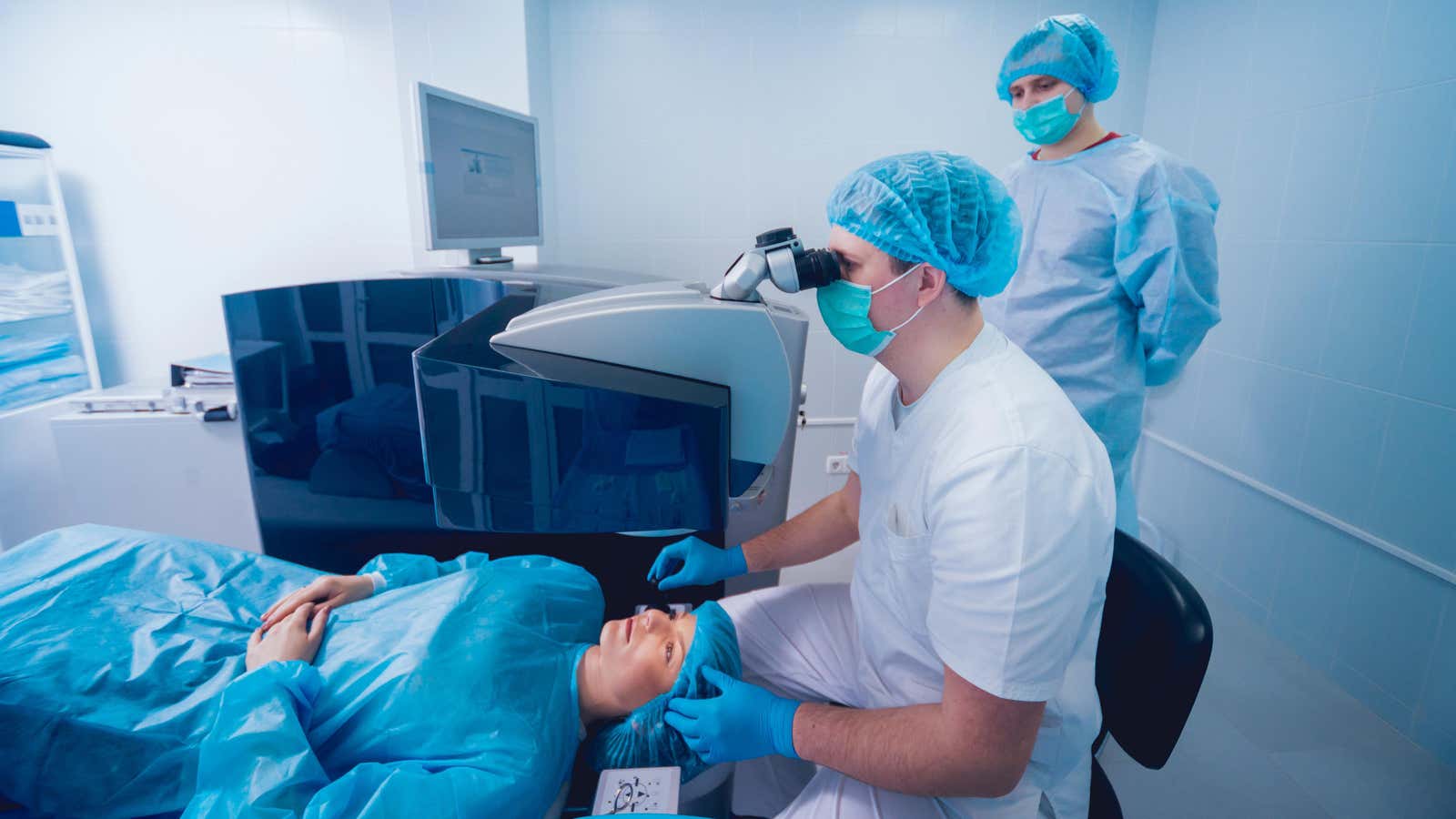LASIK Has More Risks Than You Probably Realize

LASIK eye surgery is known for being a quick and convenient medical procedure, and sometimes it is. The operation takes only a few minutes and can immediately correct your vision so that you no longer need glasses or contact lenses. But not everyone gets the best results, and the FDA wants potential patients to be aware of the risks and side effects.
What are the potential complications of LASIK surgery?
LASIK surgery is performed to reshape the cornea of the eye, the clear dome above the pupil. The operation involves cutting a flap in the cornea, removing tissue with a laser, and replacing the flap. In this case, the nerves are damaged and need to be healed. Most patients can see clearly within a day or two after surgery, but healing takes longer. The most common problem in the early days is dry eyes; After a week, 85% of patients have dry eyes. Dry eyes can cause blurred vision and pain, but eye drops help.
If severed nerves do not heal properly, symptoms such as dry eyes may persist for months or years. Other complications can occur and are more common if you have certain medical conditions, including diabetes or allergies, or if your cornea was already very thin before surgery.
The operation also does not guarantee you 20/20 vision; many people need to continue wearing glasses or contact lenses even after surgery that has improved their vision.
How common are complications after LASIK?
The FDA is working on a draft document that discusses what these complications are and who is most likely to get them.
Six months after surgery, according to the FDA, 27% of patients still have dry eyes and 41% have vision problems such as glare, halos, starburst or double vision. These vision problems can make it difficult or impossible to perform tasks such as driving at night. After six months, 2% of people report “great difficulty” or “so much difficulty that I can no longer do some of my normal activities” without glasses or contact lenses.
These symptoms usually go away, but not for everyone. The FDA requires patients to sign a form stating that these are statistics 5 years after surgery:
About 17% of patients may still need daily eye drops to treat dry eye syndrome.
Less than 2% of patients notice some visual disturbances such as glare, halos, 800 starbursts and double vision.
reduced ability to see in low light conditions; about 8% of patients may experience moderate or severe difficulty driving at night.
Very rare reports (estimated frequency less than 0.8%) of severe persistent pain that may interfere with normal activities.
Who can get complications after LASIK?
The FDA document also includes a checklist of things that can affect your chances of experiencing long-term complications. These include medical conditions, as well as other considerations, such as whether you play contact sports and rely on your ability to see well in low light (for example, if you drive a lot at night).
Contraindications that mean you should not have surgery include:
- Already have dry eyes
- A cornea that is “not thick enough” (your eye doctor can tell you about your cornea thickness)
- autoimmune disease
- Glaucoma that is not under control
- Diabetes that is not under control
In addition, there are conditions and actions that do not prohibit you from having surgery, but should probably make you think. The draft document suggests talking to your doctor about the risks if you have milder versions of the above conditions, such as if you are taking medication that causes dry eyes as a side effect, or if you have glaucoma or diabetes that is well controlled by treatment. If you have strabismus or impaired vision in one eye, this is also classified as a warning. (For a complete list, including more conditions than we’ve mentioned here, see the draft document .)
Not all clinics clearly explain the risks
If these LASIK complications are so common, why aren’t they being talked about? Maybe I’m being cynical, but one of the reasons is most likely marketing. The operation is simple and effective from the point of view of the doctor, so there are clinics that specialize in it and have solid advertising budgets. LASIK is not usually covered by insurance, and the cost varies, but averages over $2,000 per eye. Doctors can often perform the operation in 15 minutes, making it very profitable, as this analysis in an ophthalmological journal points out .
The document also mentions that LASIK clinics will offer discounts “to encourage patients to schedule visits for preoperative assessment and follow-up care.” It’s not hard to imagine that some clinics might emphasize the benefits rather than the risks when they are interested in selling.
According to the New York Times, the Food and Drug Administration has been working on the draft document for years, and the current draft has received more than 600 comments, many from surgeons suggesting the draft is too negative and could unnecessarily scare patients away.
In short, the FDA is concerned that surgeons don’t talk enough about the potential downsides of surgery before people agree to do it. It is important to understand the risks and benefits of any medical procedure, especially an elective one that you could do without. Apart from glasses and contact lenses, there are other eye surgeries that can correct your vision; each of them has its own list of risks and benefits.